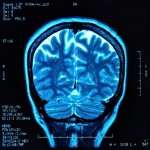The Mystery of Multiple Sclerosis Unmasked

The prevalence of auto-immune diseases (such as hypothyroidism, type 1 diabetes, Crohn’s and Celiac disease) sure seems to be on the rise in the US. The common factor for this group of life-altering diseases is that one’s own immune system decides a part of its anatomy is “foreign,” and, as a result, begins to wage a war against itself in which the attacker becomes the attacked.
One such troubling auto-immune disease—which attacks the nervous system—is multiple sclerosis (MS). In this condition, the body’s immune system has deemed the insulating, waxy coating along its nerve cells to be public enemy #1. When fighter cells begin to “eat up” this insulation, messages sent by the brain to a particular region of the body never get to when they were intended.
This “signal transmission problem” can present as decreased strength of random skeletal muscles, altered sensation in areas of the body, or eventually a disruption in coordination or mobility, which necessitates the use of assistive devices.
Because of its random, somewhat vague, initial symptoms, multiple sclerosiscan often elude diagnosis for many years. For that reason, here’s a list of some early signs for you to be aware of:
- Blurred or double vision (typically one eye)
- Thinking / focus problems
- Clumsiness / lack of coordination
- Loss of balance
- Numbness
- Tingling
- Weakness in an arm or leg
- Extreme fatigue, exacerbated by heat
Once multiple sclerosis is suspected and an MRI of the brain is ordered, telltale “plaques” visualized within the brain and/or spinal cord yield a swift diagnosis.
Each person with MS will walk a different road. Some will find their symptoms coming and going, others will be left with some minor to moderate deficits along the way, and a small percent of others will decline steadily, eventually requiring assistance with most tasks.
Advances in the treatment of MS have the newly diagnosed patient benefitting from early medical interventions—corticosteroids, plasma exchange, and biologics—which are designed to fight back against the attack of one’s own immune system.
Physical therapy is quite helpful, as well, when dealing with muscle pain, stiffness, and the need for training in the use of assistive devices. Early-stage research is underway with the hope of someday using one’s own stem cells to replace the damaged cells in the brain and spinal cord.